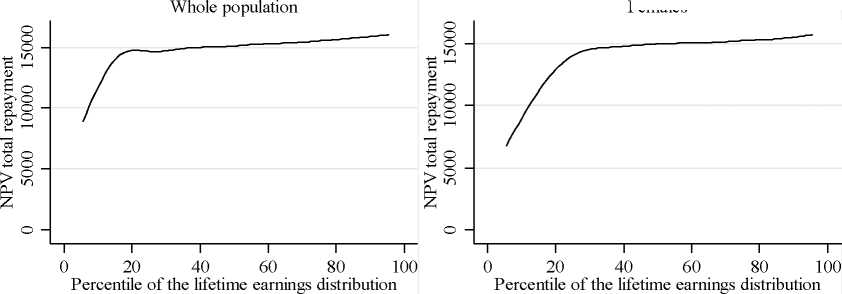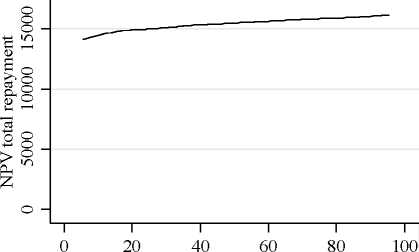Females

Males

Percentile of the lifetime earnings distribution
By the same token, the value of the government subsidy (expressed as a proportion of
the face value of the loan in Figure 4b and Table , column b) is strongly decreasing in
income, ranging from around 60% for the lowest lifetime-earning women, to around
15% for the highest earning women (with the average across all women at around
25%). For men the range of taxpayer subsidy is narrower, at around 27% for the
lowest earning men, and 12% for the highest earners (with the average subsidy at
around 17%).
Figure 4b. Subsidy as percentage of loan under the new HE system
16
More intriguing information
1. The name is absent2. Are class size differences related to pupils’ educational progress and classroom processes? Findings from the Institute of Education Class Size Study of children aged 5-7 Years
3. Standards behaviours face to innovation of the entrepreneurships of Beira Interior
4. SOME ISSUES CONCERNING SPECIFICATION AND INTERPRETATION OF OUTDOOR RECREATION DEMAND MODELS
5. A Principal Components Approach to Cross-Section Dependence in Panels
6. The name is absent
7. CGE modelling of the resources boom in Indonesia and Australia using TERM
8. Constructing the Phylomemetic Tree Case of Study: Indonesian Tradition-Inspired Buildings
9. A simple enquiry on heterogeneous lending rates and lending behaviour
10. The name is absent